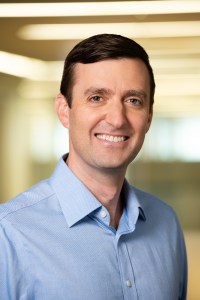On Sunday, Popes John Paul II and John XXIII will become the 79th and 80th heads of the Roman Catholic Church to become saints, an event that has become a rarity in modern times.
 How rare? Roughly 30% of all popes are saints. Starting with St. Peter, traditionally regarded as the first leader of the church after Christ’s death, 52 of the first 55 popes became saints during Catholicism’s first 500 years. In the last 1,000 years, just seven popes have been made saints, including the two being canonized on Sunday. It will be the first time in the 2,000-year history of the church that two popes will be declared saints at one time.
How rare? Roughly 30% of all popes are saints. Starting with St. Peter, traditionally regarded as the first leader of the church after Christ’s death, 52 of the first 55 popes became saints during Catholicism’s first 500 years. In the last 1,000 years, just seven popes have been made saints, including the two being canonized on Sunday. It will be the first time in the 2,000-year history of the church that two popes will be declared saints at one time.
John Paul II died on April 2, 2005, and the hundreds of thousands packing St. Peter’s Square chanted “Santo, subito!” or “Sainthood, now!” in Italian on the day of his funeral. Pope Benedict XVI soon waived the five-year waiting period after a person’s death and officially began the canonization process for his predecessor. (John Paul himself had shortened the waiting period to five years from the traditional 50.)
Nine years later – a lightning flash in Vatican time – John Paul II will be made a saint. To put that in perspective, since 1588, when the Catholic Church created an office called the Congregation for the Causes of Saints, the average time between the death of an eventual saint and canonization is 181 years.
Non-papal saints outnumber canonized pontiffs, of course. Officially, the Catholic Church teaches that all people in heaven are saints, but some are officially “canonized,” or recognized as having lived lives of heroic Christian virtue and are worthy of imitation. During the church’s first 1,000 years, saints were proclaimed by popular demand. As a result, it’s impossible to quantify exactly how many saints there are, but some estimates have the number exceeding 10,000.
In 993, St. Ulrich of Augsburg was the first saint to be formally canonized, by Pope John XV. By the 12th century, the church officially centralized the process, putting the pope himself in charge of commissions that investigated and documented potential saints’ lives. And in 1243, Pope Gregory IX asserted that only a pope had the authority to declare someone a saint. A version of that canonization process is still in place.
Recent popes are known for canonizing in large numbers: John Paul II canonized 482 saints – more than the 300 or so canonizations in the previous 600 years. And Francis’ first canonization included 813 people – the “Martyrs of Otranto” – who were beheaded by Ottoman soldiers in 1480 after refusing to convert to Islam.
Saints originally came in two varieties – martyrs and confessors of the faith. Martyrs require the posthumous performance of one miracle to be declared a saint. Before 1983, confessors required four; now they require two. (In the case of Pope John XXIII, Pope Francis waived the need for a second miracle.) A 2007 Pew Research survey found that roughly eight-in-ten Americans (79%) either completely (47%) or mostly (32%) agree that “miracles still occur today as in ancient times.” John Paul’s two miracles include a French nun’s recovery from Parkinson’s disease and a Costa Rican woman overcoming a brain aneurysm.
So why the sudden momentum for sainthood after centuries of relative quiet? Some have pointed out a recent trend among popes to set their predecessor’s cause for sainthood in motion. While not yet reaching the final step, Pius IX (d. 1878), Pius XII (d. 1958), Paul VI (d. 1978) and John Paul I (d. 1978) are all in some stage of the canonization process.
Candidates for sainthood are investigated by church authorities, who collect documents and interviews for the current pope to use in his decisions. Given the clergy abuse scandal that raged during John Paul II’s papacy, some are questioning whether the Vatican’s investigators gave the hugely popular pope a pass. After Pope Francis was elected in March 2013, we found that 70% of U.S. Catholics said addressing the clergy sexual abuse scandal should be “a top priority” for him.
Surveys we conducted in the 1980s and 1990s measured that popularity, at least among U.S. Catholics. In three different polls over the span of a decade (1987, 1990 and 1996), nine-in-ten or more U.S. Catholics said they saw John Paul II favorably (91%, 93% and 93%, respectively). By comparison, 85% said they saw Pope Francis favorably in February 2014, and 83% was the high-water mark for Pope Benedict XVI, following his visit to the United States in April 2008.
Note: This post originally misstated the year Pius IX died. His death was in 1878.



